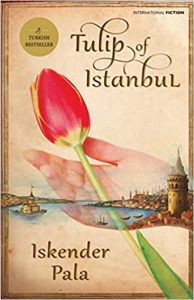Mother Earth, Sister Seed: Travels through India’s farmlands by Lathika George reveals the author’s deep connection with farmlands and farming in India. George visits farms across the length and breadth of the country, collecting gems of knowledge about a forgotten and rapidly disappearing way of life. This extensive journey cannot be made without a deep-rooted passion for the ‘farming life’.
“For years now, I have never missed a chance to visit farms and agricultural communities, always experiencing the deep connection and a sense of kinship as I participated in their daily lives. Eating, celebrating and sharing these special moments have been moving and humbling experiences. The farms and communities I chose to visit were mostly small holdings, where farming was a way of life-small farms and village communities with unique and indigenous systems: localised farming calendars, water management techniques, methods of saving seeds and grains, and the myriad rituals that mark the onset of each farming cycle from ploughing to harvest,”
What farming means to the author is vastly different from what farming is perceived by many urban dwellers, who unfortunately see it as a rough life filled with uncertainty. We hear a lot of farmer suicides and the difficulties that drive them to seek an urban life. But, India used to be a haven for farmers! Traditional farming communities lived in harmony with nature and enjoyed a good quality of life. Why do we see things differently now? What has caused that change? The book is a quest to know when ‘the cycle of death has replaced the circle of life’. It is a book that is born of the conviction that the future of the earth lies in the hands of those who are its natural partners and agrarian communities that practice sustainable farming.
Agrarian travelogue
This book is in a sense an agrarian travelogue. Each chapter describes a visit to a specific farming community in India. She travels to Tamil Nadu, Karnataka, Kerala, Suderbans in West Bengal, Khasi Hills in Assam, Dahanu in Maharashtra, Sikkim, Goa, Himachal Pradesh, Gujarat and a few other states in India.
In quite an intensive write-up, she writes about the specific crops grown in each place, the customs and traditions of the community therein, the traditional farming techniques practiced there and the modern changes that are impacting the farming community.
Thanks to George’s lyrical language one feels as if it is a story, as she narrates her interactions and observations, punctuated by poetry and legends, like one would for an enticing travel tale. However, she gently weaves in the modern moves imposed by government or changing social scenarios that threaten the old ways of life. The illustrations and photographs aptly add to the narrative.
There are myths and folklore linked to various regions that the author incorporates as well, and some of these stories are fascinating. The glories of farming life are expressed through songs and poems as well as she dips into some rich literature.
The author herself is living the “farming life” after a long spell of urban living. This puts her in a unique position to appreciate an agrarian life. She reveals in the book:
“Thirty years ago, I had moved to the countryside with my husband and three children but my own progression from the city to a small town on the mountains had been gradual, peppered with moments of uncertainty, days of pining for the undeniable pleasures of urban life. The memory of a morning such as this came to me, when I realised this was what I wanted, after all, the trade for the vibrancy of city life to a life lived on different terms: the slow pace of living, the open spaces and the clean mountain air. It was a full life in every way, I decided, with no missing pieces,”
As we travel across farmlands in India, what stands out poignantly are the human stories. There are tales of hardship, but also tales of success and satisfaction. There are some heart wrenching tales as well – such as one about the Sunderbans where hunger drove forest dwellers to seek honey in the forest despite very real threats from man eating tigers. A Srilankan farmer settled in India says, “we are all refugees in one way or the other”, highlighting the plight of refugees who have turned to farming to sustain themselves in the South of India.
We often talk about the food chain and the interdependency of living organisms. The instances provided in the book show that “Every element of nature that contributes to each stage is crucial – the rain, the birds, the bees and the worms that form the cycle of growth, from seed to soil to fruit,”. How this chain is being disrupted also comes across in the narrative. Unrestrained development, cities cutting into forests, prices on land becoming much more than crops could ever earn for the farmer. All these challenges point to a looming threat of losing what has sustained us!
And yet, there is hope.
If she describes how modernization and unscrupulous government policies have impacted farming in India in a negative manner, she also talks about positive contributions. In the chapter on the farmlands of Sikkim she illustrates how governments can support farming by supporting traditional methods and adding innovative practices. Indeed, Sikkim has the distinction of being India’s only organic state with organic produce.
Reverse migration
The depiction of life on a farm may be appealing to urban citizens. As one of the farmers, KC Ayapoa from Coorg says in the book, “It’s not the back-breaking, thankless work everyone makes it out to be. It is hard work, sure, but there’s also plenty of time for other stuff. And it is work like any other, with moments of sheer joy and discontent,”. The book has examples of modern city dwellers who’ve gone back to their roots and embraced a farm life. They come with new insight and knowledge and remain a ray of hope.
Plethora of information
I found the chapter The Traveling Seed quite illuminative. After all, any crop is about the seed. It was surprising to know the politics surrounding seeds and seed monopolisation. But despite this despairing account, it is heartening to know that many Indians are protecting indigenous seeds.
I also found local tricks and solutions by indigenous farmers quite interesting. For example, in the coffee plantations of Coorg the presence or absence of certain nondescript plants indicates the PH level of the soil, and its readiness for coffee bean cultivation. Or, the natural water irrigation system of the Khasi tribes in the northeast use a network of bamboos that work as pipes. But I guess the best was a farmer in Kerela rearing spiders to weave webs around his farm in order to protect crops from pests!
Towards the end of the book, there is a chapter on traditional farming systems which works as a kind of glossary of terms and phrases relevant to Indian agriculture as well as a state wise description of traditional architectural techniques. A book that celebrates authentic food growing cannot be devoid of recipes. The cherry on the cake is a host of local recipes- right from the farm to table!
In short…
This book looks into the life of the Indian farmer. It is a first-hand glimpse into the travails and the many pleasures of living in tune with nature. It also takes a look at how this sacred link has slowly been the victim of modernisation. It will be of special interest to those with an interest in agriculture and farming in India and as well as those who are keen on an agrarian lifestyle.

Title: Mother Earth, Sister Seed: Travels through India’s farmlands
Author: Lathika George
Publisher: Penguin Random house
Genre: Non-Fiction
Other books by the same author:






